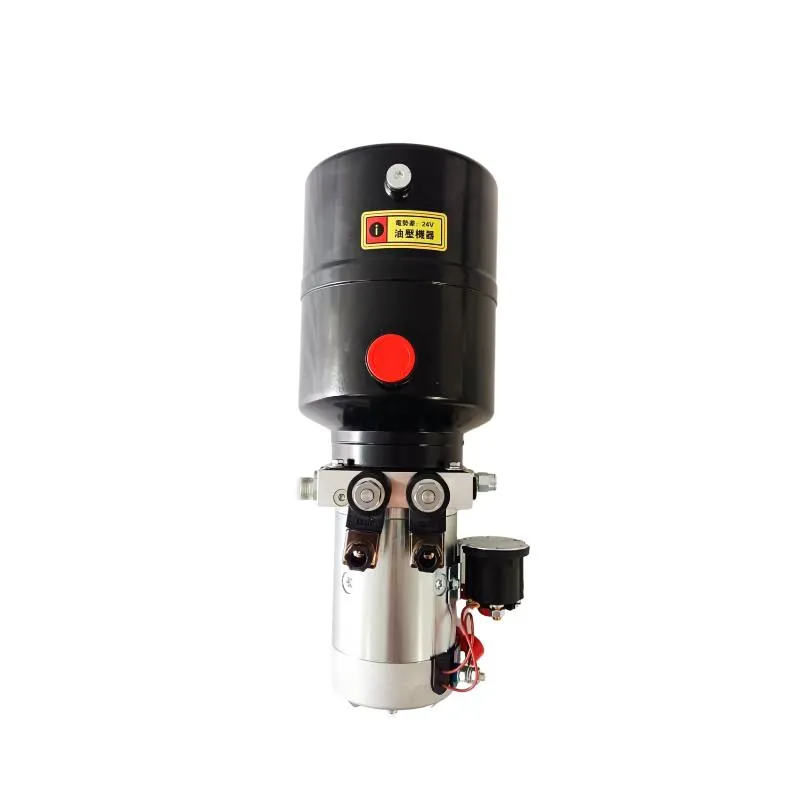Oct . 05, 2024 02:19 Back to list
rod seal hydraulic cylinder product
Understanding Rod Seal in Hydraulic Cylinders Importance and Applications
Hydraulic cylinders are essential components in various industrial applications, widely used for their ability to convert hydraulic energy into mechanical force. Among the critical elements of hydraulic cylinders, the rod seal plays a pivotal role in ensuring their efficient and safe operation. This article explores the significance, functionality, types, and applications of rod seals in hydraulic cylinders.
What is a Rod Seal?
A rod seal is a sealing element located at the base of the rod in a hydraulic cylinder. Its primary function is to prevent hydraulic fluid from leaking out of the cylinder while simultaneously protecting the internal components from dirt and debris. The rod seal ensures that the cylinder maintains optimal pressure, facilitating smooth operation even under heavy loads.
Importance of Rod Seals
1. Leak Prevention The most crucial role of a rod seal is to prevent hydraulic fluid leakage. If leaks occur, it can lead to reduced efficiency, increased maintenance costs, and potential environmental hazards. A properly functioning rod seal maintains the fluid within the cylinder, ensuring optimal performance.
2. Contamination Protection Rod seals shield the internal components of hydraulic cylinders from dust, dirt, and other contaminants. Contamination can lead to premature wear of the cylinder's components, resulting in costly repairs and downtime.
3. Pressure Maintenance Maintaining hydraulic pressure is vital for the efficient operation of machinery. Rod seals ensure that the hydraulic fluid remains contained within the system, allowing for the precise control of force and movement.
4. Extended Lifespan High-quality rod seals contribute to the overall longevity of hydraulic cylinders. By preventing leaks and contamination, they reduce wear and tear on internal components, thereby extending the service life of the entire system.
Types of Rod Seals
Rod seals come in various shapes and materials, each tailored to meet specific operational needs
. Common types include1. Rubber Seals These are versatile and widely used due to their excellent sealing properties and flexibility. Common materials include nitrile, polyurethane, and Viton, each offering different levels of resistance to temperature, pressure, and chemical exposure.
rod seal hydraulic cylinder product

2. PTFE Seals Polytetrafluoroethylene (PTFE) seals are known for their high resistance to heat and chemical corrosion, making them ideal for demanding applications.
3. Composite Seals These seals combine different materials to achieve optimal performance, balancing durability, flexibility, and resistance to environmental factors.
4. Specialized Seals Some applications require custom rod seals designed to withstand extreme conditions such as high pressure, temperature fluctuations, or aggressive chemicals.
Applications of Rod Seals
Rod seals are indispensable across various industries, including
1. Construction Equipment Hydraulic cylinders are essential in excavators, bulldozers, and forklifts, where rod seals ensure reliable operation under heavy loads.
2. Automotive Industry Hydraulic systems used in braking and suspensions systems rely on rod seals to maintain pressure and performance.
3. Manufacturing From presses to automation equipment, hydraulic cylinders with effective rod seals are critical for productivity and safety.
4. Marine Applications Offshore and marine equipment requires robust sealing solutions to ensure effective operation and prevent fluid leaks that could lead to environmental disasters.
Conclusion
Rod seals in hydraulic cylinders are vital components that significantly affect the performance and longevity of the machinery. Understanding their importance, types, and applications is crucial for maintenance and selection processes in various industries. Investing in high-quality rod seals not only enhances the efficiency of hydraulic systems but also ensures their safe and reliable operation. As technology advances, the development of more innovative rod seal designs will continue to enhance their performance, catering to increasingly demanding applications.
-
High-Performance Fork Lift Hydraulic Power Units
NewsAug.21,2025
-
High-Quality Set of 50/60-45-290 471 - Precision Parts
NewsAug.19,2025
-
1.5 Ton Lifting Cylinder-Hebei Shenghan|Heavy-Duty Lifting, Precision Engineering
NewsAug.18,2025
-
1.5 Ton Lifting Cylinder-Hebei Shenghan|Precision Hydraulic Solutions&Industrial Lifting
NewsAug.18,2025
-
1.5 Ton Lifting Cylinder 70/82-40-290-535 - Hebei Shenghan Hydraulic Machinery Co., Ltd.
NewsAug.18,2025
-
1.5 Ton Lifting Cylinder 70/82-40-290-535|Hebei Shenghan Hydraulic Machinery Co., Ltd.
NewsAug.18,2025
